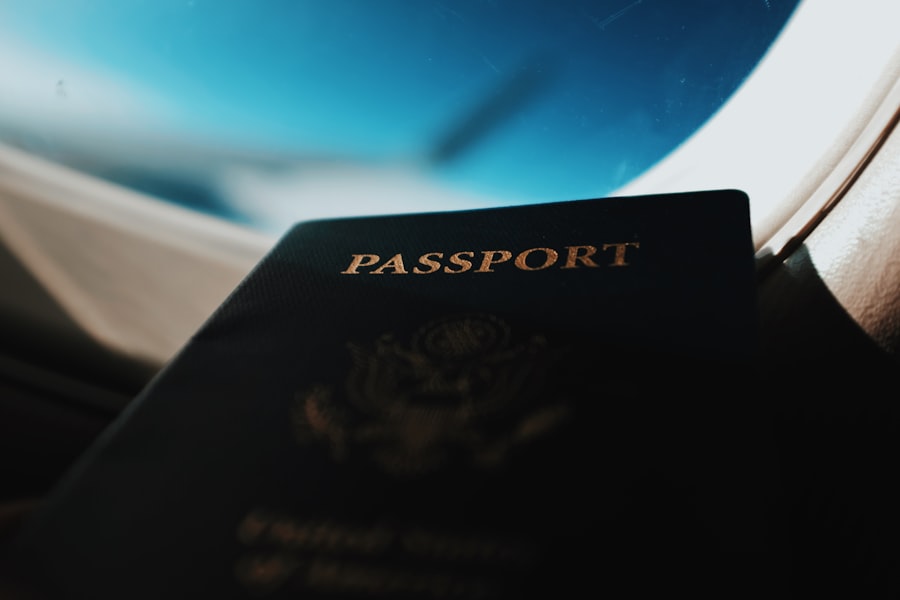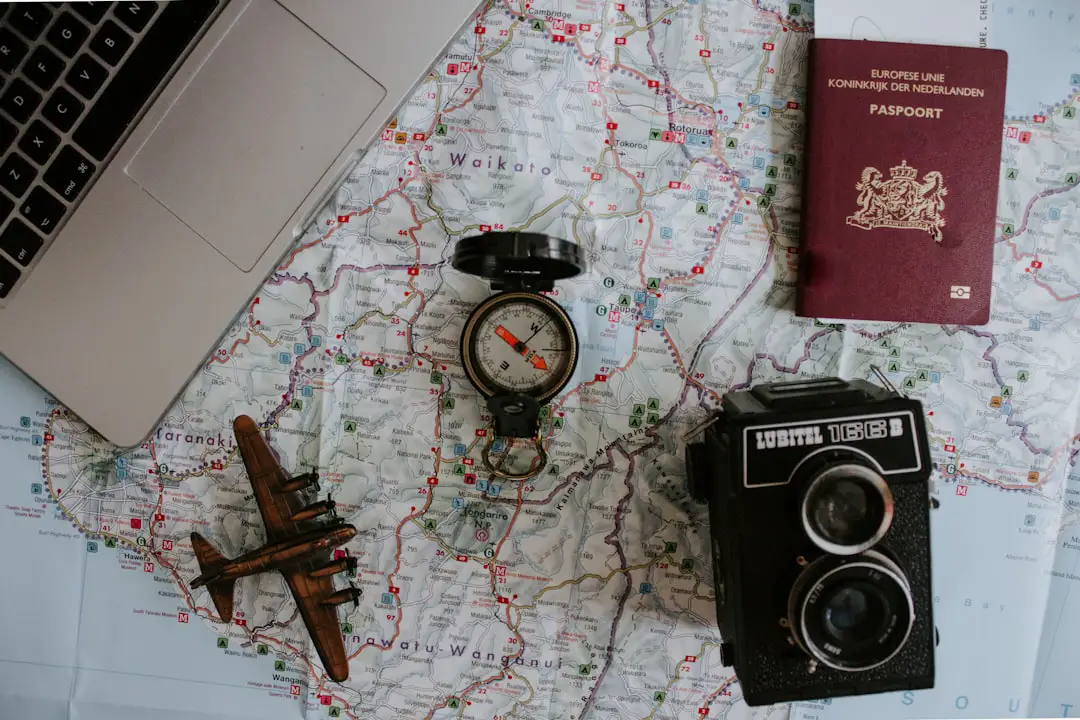The Deferred Action for Childhood Arrivals (DACA) program was established in 2012 to provide temporary relief from deportation for individuals who were brought to the United States as children without legal status. While DACA recipients, often referred to as “Dreamers,” are granted work permits and protection from removal, their travel options are significantly limited. Under the current regulations, DACA recipients are generally prohibited from traveling outside the United States unless they have received advance parole, a special permission that allows them to re-enter the country after traveling abroad.
This restriction is crucial for Dreamers to understand, as traveling without this permission can lead to severe consequences, including the potential loss of their DACA status. The process of obtaining advance parole is not straightforward. Applicants must demonstrate that their travel is for one of three specific reasons: educational purposes, employment opportunities, or humanitarian reasons.
Even with an approved advance parole, there is no guarantee of re-entry into the U.S., as immigration officials have the discretion to deny entry. This uncertainty can create anxiety for DACA recipients considering travel, especially to places like Puerto Rico, which, while a U.S. territory, has its own unique set of regulations and considerations for travelers.
Understanding these restrictions is essential for Dreamers who wish to explore their options without jeopardizing their status.
Key Takeaways
- DACA recipients can travel within the U.S. but should be cautious when traveling abroad due to potential re-entry restrictions.
- U.S. citizens can travel to Puerto Rico without a passport, but non-U.S. citizens may need additional documentation.
- Puerto Rico offers various transportation options including taxis, buses, and car rentals, and a range of accommodation options from budget to luxury.
- Visitors to Puerto Rico can access healthcare and emergency services, but it’s important to have travel insurance and be aware of any potential language barriers.
- Navigating immigration and customs in Puerto Rico requires understanding entry requirements and being prepared with necessary documentation.
- Puerto Rico offers a rich cultural and recreational experience, including historical sites, beaches, and local festivals.
- Visitors should consider financial considerations such as currency exchange and banking options before traveling to Puerto Rico.
- To ensure a safe and enjoyable trip, travelers should be mindful of their surroundings, follow local laws and customs, and stay informed about any travel advisories.
Entry Requirements for Puerto Rico
Planning Your Trip to Puerto Rico
While no passport is required for U.S. citizens traveling to Puerto Rico, DACA recipients must still plan carefully and consider their legal standing. The journey to Puerto Rico may be less complicated than international travel, but it’s crucial to be prepared.
Documentation and Identification
Upon arrival in Puerto Rico, DACA recipients should be prepared to present identification that verifies their legal status in the U.S. This may include their DACA approval notice or work permit. It’s advisable to carry documentation that clearly outlines their DACA status to avoid any misunderstandings during the entry process.
U.S. Customs and Border Protection
Although Puerto Rico does not have its own immigration laws separate from those of the United States, U.S. Customs and Border Protection (CBP) officials are present at airports. Therefore, travelers should be ready to answer questions regarding their immigration status.
Transportation and Accommodation Options

Once in Puerto Rico, navigating transportation options can enhance the travel experience significantly. The island boasts a variety of transportation methods, including rental cars, public buses, and ride-sharing services like Uber. Renting a car is a popular choice among tourists, as it provides the freedom to explore the island at one’s own pace.
Major rental companies operate at the Luis Muñoz Marín International Airport and throughout various locations on the island. However, it is essential for travelers to check if their driver’s license is valid in Puerto Rico and whether they need additional insurance coverage. Public transportation in Puerto Rico is another viable option for getting around.
The island’s bus system, known as “AMA,” offers routes that connect major cities and tourist attractions. While buses can be an economical choice, they may not always run on a strict schedule, so travelers should plan accordingly. For those looking for a more immersive experience, local taxis and ride-sharing services provide convenient alternatives that can help navigate the island’s diverse landscapes and vibrant neighborhoods.
Accommodation options in Puerto Rico range from luxury resorts to budget-friendly hostels and vacation rentals. Popular tourist areas such as San Juan offer a plethora of choices, including beachfront hotels that provide stunning ocean views and easy access to local attractions. For travelers seeking a more authentic experience, staying in a guesthouse or a locally-owned bed and breakfast can provide insight into Puerto Rican culture and hospitality.
Regardless of the choice of accommodation, it is advisable to book in advance, especially during peak tourist seasons when availability may be limited.
Accessing Healthcare and Emergency Services
| Metrics | Data |
|---|---|
| Number of hospital visits | 10,000 |
| Average emergency response time | 15 minutes |
| Percentage of population with health insurance | 85% |
| Number of primary care physicians per 1,000 people | 2.5 |
Healthcare access is an important consideration for any traveler, particularly for those with specific medical needs or pre-existing conditions. In Puerto Rico, healthcare services are available through both public and private facilities. The island has several hospitals equipped to handle emergencies, including the Hospital de la Concepción in San Juan and the Pavia Hospital in Caguas.
For non-emergency medical needs, numerous clinics and private practices are scattered throughout urban areas. DACA recipients should ensure they have adequate health insurance coverage before traveling to Puerto Rico. While many U.S.-based health insurance plans provide coverage in Puerto Rico due to its status as a U.S.
territory, it is crucial to verify this with the insurance provider beforehand. In case of an emergency, travelers should be aware of how to access emergency services by dialing 911, which operates similarly to the mainland United States. Familiarizing oneself with local healthcare resources can alleviate concerns about potential medical issues during the trip.
Navigating Immigration and Customs
Navigating immigration and customs in Puerto Rico can be less daunting than international travel due to its status as a U.S. territory; however, DACA recipients must remain vigilant about their documentation. Upon arrival at the airport, travelers will encounter U.S.
Customs and Border Protection (CBP) officials who may ask questions regarding their immigration status. It is advisable for DACA recipients to carry their DACA approval notice and any other relevant documentation that proves their legal presence in the United States. While customs procedures are generally straightforward for U.S.
citizens and residents traveling within U.S. territories, DACA recipients should be prepared for potential scrutiny due to their unique immigration status. Being honest and forthcoming with CBP officials can help facilitate a smoother entry process.
Additionally, understanding what items are permissible to bring into Puerto Rico can prevent complications at customs checkpoints; travelers should familiarize themselves with regulations regarding food items, agricultural products, and other restricted goods.
Exploring Cultural and Recreational Activities

Puerto Rico is rich in cultural heritage and offers a plethora of recreational activities that cater to diverse interests. From exploring historic sites like Old San Juan with its colorful colonial architecture and cobblestone streets to visiting El Yunque National Forest—the only tropical rainforest in the U.S. National Forest System—there is no shortage of experiences awaiting travelers.
The island’s vibrant culture is reflected in its music, art, and culinary scene; visitors can immerse themselves in local traditions by attending festivals or visiting art galleries showcasing Puerto Rican artists. For those seeking adventure, Puerto Rico offers numerous outdoor activities such as hiking, snorkeling, and surfing. The bioluminescent bays in Fajardo and Vieques provide unique opportunities for kayaking under the stars while witnessing nature’s mesmerizing light show created by microorganisms in the water.
Additionally, the island’s beaches—such as Flamenco Beach on Culebra—are renowned for their pristine beauty and crystal-clear waters, making them ideal spots for relaxation or water sports.
Financial Considerations and Banking
When traveling to Puerto Rico, financial considerations play a significant role in ensuring a smooth trip. The currency used in Puerto Rico is the U.S. dollar, which simplifies transactions for U.S.
citizens and residents since there is no need for currency exchange. However, travelers should still be mindful of their spending habits and budget accordingly for accommodations, dining, transportation, and activities. Accessing banking services in Puerto Rico is relatively straightforward; major banks such as Banco Popular and FirstBank have branches throughout the island.
ATMs are widely available in urban areas and tourist destinations, allowing travelers to withdraw cash as needed. It is advisable for DACA recipients to inform their banks of their travel plans beforehand to avoid any issues with card usage while abroad. Additionally, understanding local tipping customs—typically around 15-20% at restaurants—can help ensure that travelers are prepared for dining expenses.
Tips for a Safe and Enjoyable Trip
To ensure a safe and enjoyable trip to Puerto Rico, travelers should take several precautions before embarking on their journey. First and foremost, it is essential for DACA recipients to have all necessary documentation organized and easily accessible during travel. This includes carrying copies of their DACA approval notice and any other relevant identification that may be required at checkpoints or during emergencies.
Staying informed about local laws and customs can also enhance the travel experience while minimizing potential misunderstandings with locals or authorities. Engaging with local communities respectfully and being open to learning about Puerto Rican culture can lead to enriching experiences that go beyond typical tourist attractions. Additionally, travelers should remain aware of their surroundings and practice common safety measures such as avoiding poorly lit areas at night and keeping personal belongings secure.
Lastly, embracing flexibility during the trip can lead to unexpected adventures; whether it’s discovering a hidden gem off the beaten path or trying local delicacies at street vendors, being open-minded can transform an ordinary trip into an extraordinary one filled with lasting memories.
If you are considering traveling to Puerto Rico with DACA status, it is important to be aware of the current regulations and restrictions. For more information on traveling with DACA, you can check out this article on the best double stroller for travel. This article provides helpful tips and recommendations for traveling with young children, which can be especially useful for DACA recipients who may be traveling with their families.
FAQs
Can DACA recipients travel to Puerto Rico?
Yes, DACA recipients can travel to Puerto Rico without needing a visa or a passport, as it is a U.S. territory.
Do DACA recipients need to apply for advance parole to travel to Puerto Rico?
Yes, DACA recipients need to apply for advance parole before traveling to Puerto Rico or any other international destination, as leaving the U.S. without advance parole may result in the termination of their DACA status.
Can DACA recipients travel to Puerto Rico for leisure or business purposes?
DACA recipients can travel to Puerto Rico for both leisure and business purposes, as long as they have obtained advance parole and meet all other entry requirements.
Are there any restrictions for DACA recipients traveling to Puerto Rico?
DACA recipients must ensure that their advance parole is approved before traveling to Puerto Rico, and they should also comply with any other entry requirements, such as having a valid government-issued photo ID.
Can DACA recipients travel to other U.S. territories with advance parole?
Yes, DACA recipients with approved advance parole can travel to other U.S. territories, such as the U.S. Virgin Islands and Guam, without needing a visa or a passport.
